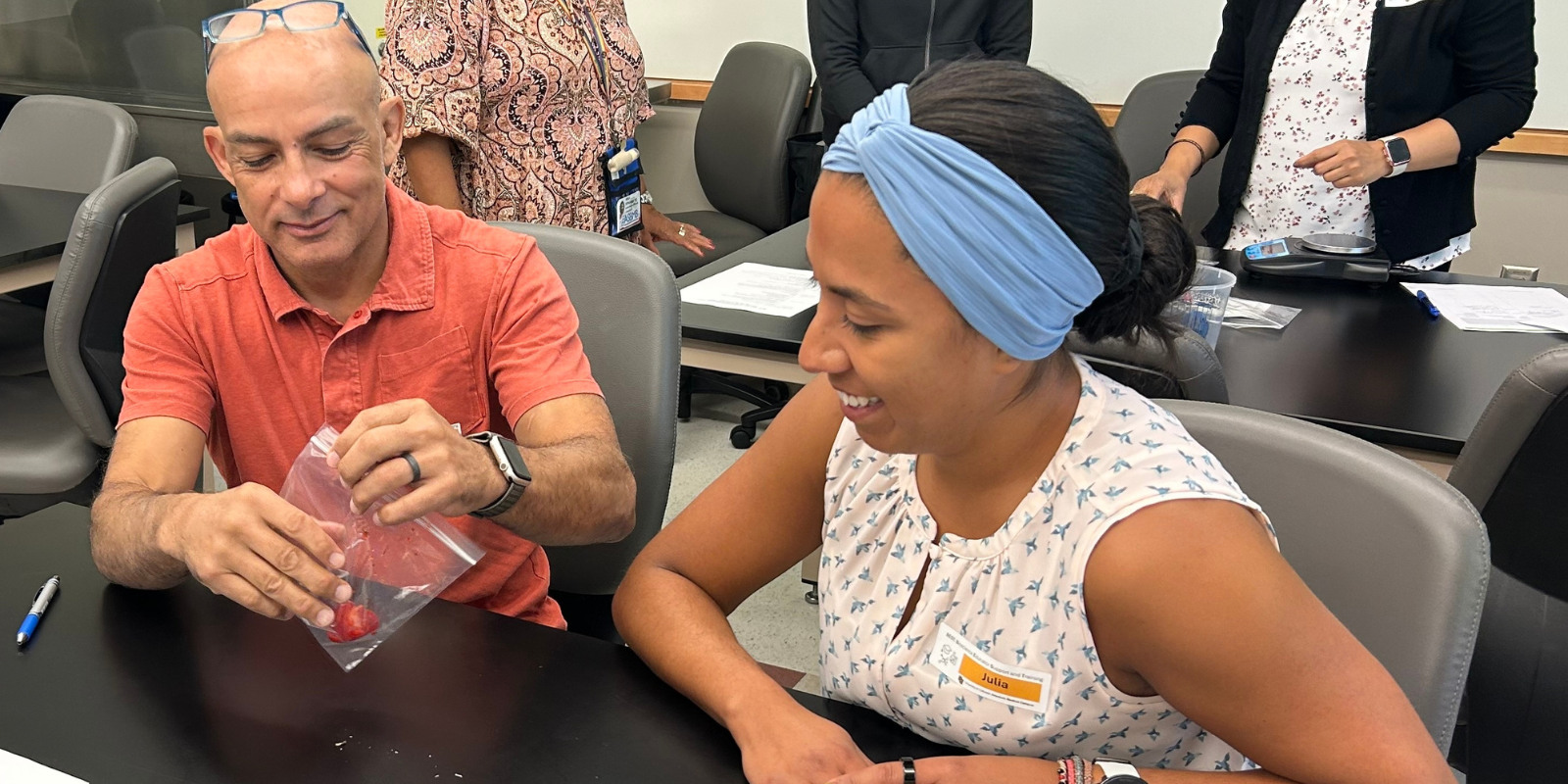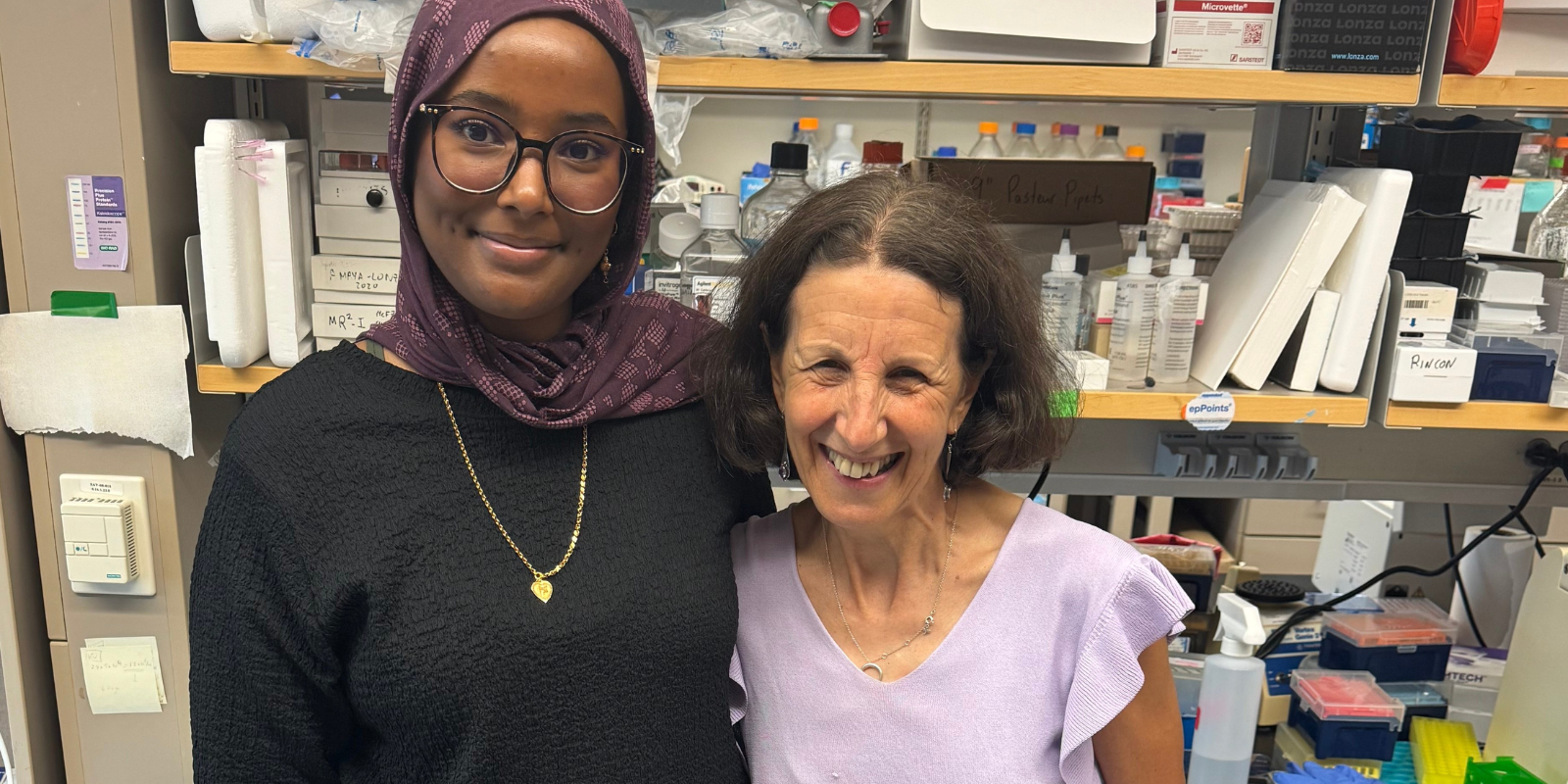On a sunny fall Saturday after a CU Buffs win, my 13-year-old, Leif, and I walked down to Boulder’s Pearl Street Mall to talk with strangers about cancer. Among others, we spoke with a mid-60s visiting Arizona State football fan, a very cute eight-year-old girl, and some guy with dreadlocks named Carl. We asked them three questions: What is cancer, How do you get cancer, and How do you treat cancer? I also asked these same questions of University of Colorado Cancer Center researchers including Nobel Laureate, Tom Cech, PhD, director of the CU Boulder BioFrontiers Institute, and D. Ross Camidge, MD, PhD, Joyce Zeff Chair in Lung Cancer Research and Director of the CU Thoracic Oncology Clinical and Clinical Research Programs. Can you guess who said what?

Carl represents the majority of answers, which included some combination of the words DNA, mutation, and tumor. Tom Cech, winner of the 1989 Nobel Prize in Chemistry, said that cancer is uncontrolled cell growth, and D. Ross Camidge similarly said that cancer is a cellular mutiny. Of course, Drs. Cech and Camidge are correct and we’ll get to their definitions of cancer in a minute, but it’s the 8-year-old’s answer that gets to the real point: Cancer is a scary disease. We care about cancer not because of what it is, but because of what it does. But the more you know about what it is, the more you can understand what it does. And in some way, maybe that can make it less scary. If you’re a patient or caregiver or even a researcher who believes knowledge of cancer is power over cancer, read on.
Let’s start the real definition of cancer by looking at what it’s not. It’s not like other diseases. You can’t catch it. There is no tiny bacteria or virus or fungus that causes cancer (okay, there are infections like HPV that increase cancer risk, but that’s slightly different). Instead, cancer is just a mistake. This scary disease starts as a tiny mistake in one of your body’s 37.2 trillion cells.
Whether blood cancer, bone cancer, breast cancer, or any of the cancers affecting the body’s many other types of tissues, cancer is the mistake of uncontrolled growth by mutinous cells. If we’re being nitpicky here, cancer is actually the uncontrolled replication of cells – because it’s not that a single cancer cell swells into a tumor, but that a cancer cell spits out dangerous little copies of itself that all clump together into a mass (or blossom through the blood).
Really, by itself, we don’t care much about a tumor – you could implant a baseball under your skin and it probably wouldn’t kill you (though remains contraindicated in most cases). The problem is that tumors are like cars broken down on I-70 in the middle of the weekday commute – simply by being there, they can block digestive or cardiovascular systems. Or cancer cells can push out healthy cells in essential structures like the liver, blood, or bones.
The mistakes that cause cancer happen in your genes. Remember, genes are blueprints. Sometimes the cancer-causing mistake is the simple scrambling of a gene’s blueprint (genetic mutation), and sometimes bits of genes are mashed together to make a dangerous new blueprint (genetic fusion), and other times a gene’s blueprint is manufactured too often or not often enough (genetic amplification, downregulation, etc.), but the result is the same: Genetic mistakes lead the body to manufacture stuff that tells cancer cells to grow, divide, and survive without bounds.
Of course, this makes it sound like cancer is one disease, caused by a single genetic mistake that happens to pop up in a certain part of the body like the lung or breast or prostate, but that’s not the case at all. Cancer can be caused by many different genetic mistakes, and most cancers have more than one mistake. This means that there are many different kinds of cancer, defined not only by where they live in the body, but by the genetic mistakes that create them. There’s ALK cancer, ROS1 cancer, BRAF cancer, BRCA cancer, MYC cancer, and many more, with hundreds or even thousands still waiting to be discovered. Cancer is not one disease, but many related diseases. What do they all have in common?
Drs. Camidge and Cech said it: No matter the genetic mistakes that causes cancer, the result is uncontrolled growth of mutinous cells. Or if you prefer to keep it simple, cancer is a scary disease.

Genetic mistakes cause cancer, but what causes these genetic mistakes? In fact, all these quotes are correct. Carl is correct that exposures to things like the sun and smoking make DNA errors more likely (the jury’s still out on burned meat); D. Ross Camidge and Tom Cech are correct to add cell division errors (like a broken copy machine) and mutations that we get from our parents to Carl’s list; and our 60-something Arizona football fan is correct that despite these risk factors, who gets cancer still comes down to chance. Again, our 8-year-old sums it up: You get cancer when something goes wrong in your body.
But the creation of a cancer cell is only half the story. In fact, work at CU Cancer Center and elsewhere shows that cancer cells pop into existence all the time (as if you needed another reason not to sleep at night). Most of these cancer cells are killed immediately – the body has systems that specialize in recognizing cells with altered or damaged DNA and then either repairing the damage or, if the damage is beyond repair, killing the cell. Then there’s the role of the immune system – if a cancer cell looks different enough than a healthy cell, the immune system may recognize it and kill it.
Finally, there’s the harsh truth of natural selection. See, the fact is that we largely overestimate the strength of cancer cells. Sure, they replicate really fast, but the genetic mistakes that produce this superpower also make them an imperfect match for the ecosystem of the body. Think of it this way: The great white shark may be nature’s ultimate predator, but they tend to have non-optimal survival outcomes compared to camels when placed in the Sahara. If the body is the Sahara, healthy cells are camels and cancer cells are the sharks. And in the ecosystem of the body, healthy cells tend to out-compete cancer cells.
What this means is that even though we develop cancer cells all the time, we rarely get cancer. Not until, as CU Cancer Center Deputy Director, James DeGregori, PhD, shows, there’s a different playing field. Not only do risk factors like smoking and alcohol use insult DNA in a way that increases the accidental production of cancer cells, they change the ecosystem in which cancer cells compete against healthy cells. It’s like submerging the Sahara. In a tissue ecosystem damaged by age, sun, smoking, etc., suddenly highly adaptable, quick-growth cancer cells (sharks) may find themselves more fit than healthy cells (camels).
Or, as our 8-year old said, something goes wrong in your body.

Carl who said the secret to treating cancer is to poison yourself. In a way he’s right: Chemotherapy pushes all your cells toward the edge of a cliff, and because cancer cells start closer to the edge, the hope is that more cancer cells than healthy cells take the plunge. But while chemotherapy remains part of the best treatment for many cancers, we live in a renaissance of new strategies against cancer that can augment or even replace traditional strategies.
But let’s back up a step. You’ve heard the old saying about the horse and the barn door. Similar is true of cancer: The best way to treat cancer is to lock the barn door before the horse escapes – in other words, to prevent it, most importantly by avoiding known risk factors. Barring that, the next best option is to catch the darn horse before it goes too far. If a mammogram can catch breast cancer as stage 1 disease (when the cancer is contained in the breast), the 5-year survival rate is 99 percent; but if breast cancer is detected only once it’s spread (stage 4 disease), the 5-year survival rate is only 27 percent. With colon cancer, screening via colonoscopy can detect and treat cancer before it’s even cancer, removing pre-cancerous polyps. And lung cancer screening for high-risk populations is becoming more and more accessible. (Emerging screening techniques seek to sample blood, breath, or stool for molecular signatures of cancer cells.)
The gist is that no matter how a cancer is treated, catching it earlier is better. Which, of course, does about as much good for a cancer patient as telling a farmer with a lost horse that he should have locked the barn door. Let’s say you have cancer. What now? Well, as our 8-year-old said, you go to the doctor. Actually, because no single doctor does surgery, radiation, and drugs, cancer patients go to many doctors.
When you go to these doctors, they will help you decide what kinds of treatments meet your goals. Some cancers grow so slowly that you’re more likely to die with them than from them, and thus don’t require treatment. Others can be surgically removed. Some will require chemotherapy before or after surgery. Sometimes radiation replaces or augments surgery and/or chemotherapy, or radiation can be used to zap pockets of disease that recur after other treatments. Then there are drugs beyond chemotherapy. Remember that cancers are caused by genetic mistakes, and now many genetically targeted drugs turn off these mistaken genes. Or drugs may restrict the things that cells with malfunctioning genes need, for example withholding estrogen from estrogen-addicted breast cancer, or withholding androgen from androgen-addicted prostate cancer. And as Tom Cech suggests, immunotherapy is a game-changer for many kinds of cancer.
Cancer treatment was never simple, and now with innovative scientists and doctors coming at cancer from new directions that were entirely unimaginable a decade ago, treatment can be mind-bogglingly complex, with new layers of complexity – along with new reasons for hope – coming down the drug-development pipeline seemingly every day. This is why is takes over a decade of school and training to become a cancer doctor, and why CU Cancer Center gathers over 300 of these MD, PhD, MPH, and other specialists, each adding their unique expertise to the study and treatment of this family of related diseases.
So cancer is the uncontrolled growth of mutinous cells that out- compete healthy cells in the ecosystem of the body, and is treated with complex combinations of space-age treatments. Or you can understand it this way: What is cancer? It’s a scary disease. How do you get cancer? Something goes wrong in your body. How do you treat cancer? You go to the doctor.
It turns out that all we really needed to know about cancer comes from an 8-year-old on the Pearl Street Mall.



